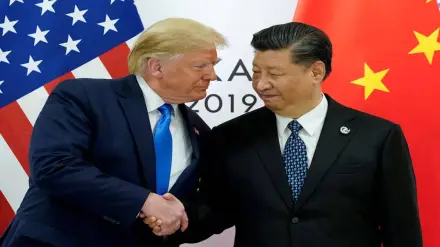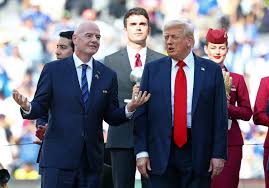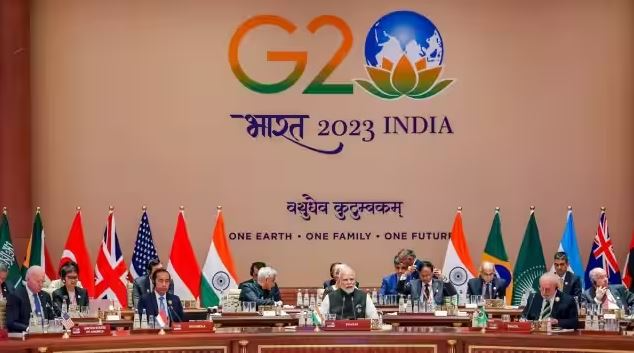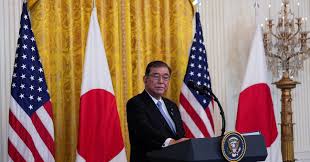
U.S. and China Resume High Level Trade Talks Navigating a Fragile Economic Reset
In a globally significant turn of events, the United States and China have officially resumed high level trade talks, signaling a tentative but critical thaw in one of the world’s most complex bilateral relationships. As of July 2025, delegations from both countries have met for the first time in over a year to negotiate tariff reductions, intellectual property protections, and fair trade mechanisms. The dialogue, held discreetly in London and later in Geneva, has been described by insiders as “tense but productive,” marking a potential inflection point for a global economy still rattled by supply chain disruptions, inflationary pressures, and geopolitical rivalry.
This renewed engagement follows years of escalating trade tensions that have cost both nations billions in lost economic activity and shaken investor confidence worldwide. The initial trade war marked by tit for tat tariffs began under the Trump administration in 2018 and escalated again during his second term starting in 2024. The 2025 talks are seen as an opportunity to de escalate this ongoing conflict, particularly amid mounting pressure from American farmers, Chinese manufacturers, and multinational corporations operating across both jurisdictions.
Tariff Rollbacks The Crux of the Talks
At the heart of the resumed negotiations lies the contentious issue of tariffs. In previous years, the U.S. imposed steep duties up to 145% on Chinese exports ranging from electronics to textiles. In retaliation, Beijing levied similar tariffs on American goods, targeting sectors like agriculture, automotive, and aerospace. This latest round of talks focuses on establishing a tiered rollback mechanism, where both sides will lower tariffs in phases depending on mutual compliance and verifiable enforcement of trade obligations.
The U.S. is pushing for access to China’s domestic consumer market and protection for American intellectual property, while China is lobbying for the lifting of restrictions on semiconductors, advanced chip manufacturing tools, and green energy components. Negotiators are reportedly considering the reactivation of the dormant 2020 Phase One Agreement but with substantial revisions, including digital trade provisions and more robust monitoring of non tariff barriers.
Rare Earth Minerals and Supply Chain Resilience
Another major focal point is the regulation of rare earth minerals, which are critical to the production of advanced electronics, military systems, and renewable energy technologies. China currently controls approximately 60% of global rare earth production and has, in the past, used its leverage as a geopolitical tool. The U.S. delegation has called for a transparent and enforceable export framework that ensures consistent supply chains, particularly for American defense and clean energy sectors.
In response, China has expressed willingness to ease export restrictions but seeks reciprocal access to raw material technologies and a relaxation of sanctions on Chinese tech firms. Both sides agree that supply chain decoupling is not feasible in the short term. Instead, the talks are moving toward the establishment of a joint rare earth transparency platform a shared system for monitoring trade flows, inventory levels, and pricing standards to reduce market volatility.
Tech, Data, and the Battle for Standards
While tariffs and commodities are important, the underlying struggle between the U.S. and China is fundamentally about technological supremacy. The talks have included preliminary proposals for governing cross border data flows, regulating AI exports, and setting global standards for emerging technologies. Washington remains concerned about the export of sensitive technologies that could bolster China’s military capabilities, while Beijing argues for an end to what it views as “technological containment.”
Though no formal agreement has yet been reached, both sides are reportedly exploring the creation of a bilateral tech review council a mechanism to address concerns about AI, quantum computing, and dual use technologies before imposing unilateral export bans. This council, if implemented, could be the most significant institutional innovation of the negotiations and may serve as a blueprint for future cooperation in an increasingly multipolar tech world.
Political Pressures and Election Calculations
The political backdrop on both sides adds urgency and complexity to the talks. In the U.S., President Trump is eager to demonstrate foreign policy wins ahead of the midterm elections later this year. The administration has been criticized for its harsh stance on trade, especially as American farmers and small manufacturers feel the pinch of Chinese retaliatory tariffs. Recent polling indicates that over 60% of voters support reducing trade barriers if it helps curb inflation and bring down consumer prices.
In China, President Xi Jinping faces different pressures. With China’s domestic economy slowing and unemployment among young people rising, the government is under pressure to stabilize international trade and attract foreign investment. The Chinese leadership also seeks to restore its image as a reliable global trading partner without appearing to capitulate to U.S. demands. These delicate optics have shaped the tone of the talks, which insiders describe as “calm but cautious.”
Public Sentiment and Economic Stakes
Public sentiment in both countries reflects the high stakes. In the U.S., business groups such as the Chamber of Commerce and the National Retail Federation have lobbied hard for tariff relief. They argue that trade restrictions not only raise prices for consumers but also stifle innovation by limiting access to affordable components and finished products. On the Chinese side, small and medium enterprises are eager to regain lost international clients and reopen export channels that have been severely constricted since 2020.
Global markets, too, are watching closely. The announcement of resumed talks sparked mild rallies in Asian stock markets and a slight dip in the U.S. dollar, reflecting cautious optimism. However, analysts warn that without clear milestones and timelines, any relief could be short lived. Major multinationals like Apple, Tesla, and Siemens are hedging their bets maintaining operations in China while expanding production in Vietnam, Mexico, and India to reduce geopolitical risk.
What’s Next From Framework to Treaty
Though progress has been made, the road to a comprehensive agreement remains long. The current talks are expected to produce a joint framework by August 2025, with concrete policy shifts likely to follow in staggered phases. A major milestone to watch is the Trade Ministers’ Summit planned for October in Singapore, where both nations are expected to unveil draft agreements covering at least five core areas tariffs, IP enforcement, rare earth regulation, digital commerce, and tech export controls.
The success or failure of these talks will have ripple effects far beyond Washington and Beijing. For emerging markets, a stable U.S. China trade relationship promises more predictable investment flows and lower commodity price shocks. For Europe, which is navigating its own industrial policy, the outcome will influence everything from green technology partnerships to 5G infrastructure decisions. And for the global economy, the talks represent a chance to recalibrate one of its most important but volatile relationships.
Conclusion A Delicate Balancing Act
The resumption of U.S. China trade talks is a hopeful development, but one fraught with complications. While both sides have strong incentives to de escalate, the ideological divide between state driven capitalism and liberal market democracy remains vast. Still, in an era of growing economic nationalism and geopolitical friction, even incremental progress counts.
What matters now is if negotiators can bridge policy gaps with tangible action. Without measurable outcomes tariff rollbacks, clear export rules, and cooperative tech frameworks these talks risk becoming another round of diplomatic theatre. But if both sides manage to push past decades of mistrust and focus on pragmatic cooperation, this could be a genuine turning point in the future of global trade.
Related Post
Popular News
Subscribe To Our Newsletter
No spam, notifications only about new products, updates.
















